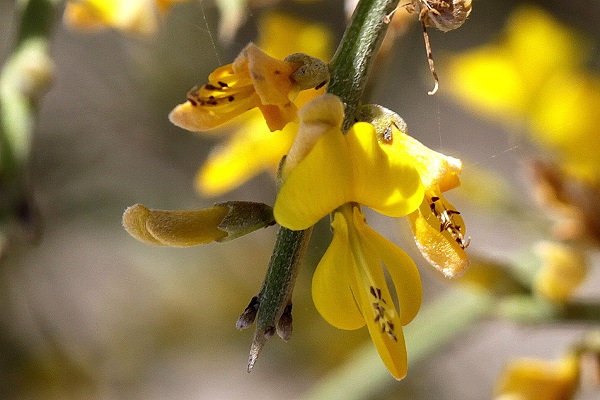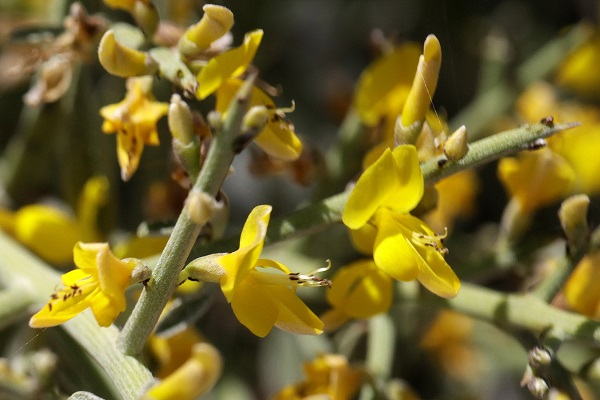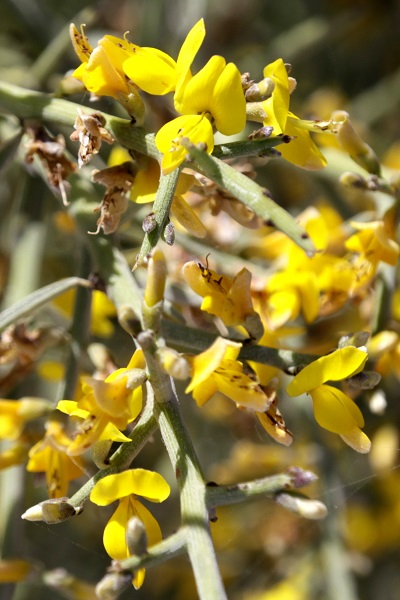Hebrew: רתמה קוצנית, Arabic: الجينيستا الفاسلية
| Scientific name: | Genista fasselata Decne. | |
| Synonym name: | Genista sphacelata Spach | |
| Common name: | variety of broom | |
| Hebrew name: | רתמה קוצנית | |
| Arabic name: | الجينيستا الفاسلية | |
| Family: | Fabaceae or Papilionaceae, Legume / Pea Family, משפחת הפרפרניים |

|
| Life form: | Shrub up to 150cm | |
| Spinescence: | Stems | |
| Succulence: | no | |
| Stems: | Pulvini (localized swelling at a joint) and scale like | |
| Leaves: | leaflets narrowly oblanceolate, serious | |
| Inflorescence: | Flowers borne singly or in lax clusters in the axel of each bract, on spines or unarmed branches | |
| Flowers: | Bracts leaflike; bracteoles minute; calyx 4-5mm, two-lipped, glabrous, the lips about 1/3 as long as tube; corolla yellow; standard 6-7mm, glabrous | |
| Fruits / pods: | Legume | |
| Flowering Period: | May, June | |
| Habitat: | Batha, Phrygana (endemic to the Carmel) | |
| Distribution: | Mediterranean Woodlands and Shrublands | |
| Chorotype: | Mediterranean | |
| Summer shedding: | Perennating |

Derivation of the botanical name: Genista, the Latin name from which the Plantagenet kings and queens of England took their name (planta genista), the Latin for yellow broom flower, which the Counts of Anjou wore as an emblem on their helmets. The Plantagenets were a huge powerful family not just in England but throughout Europe. The first Plantagenet was King Henry 2nd whose father owned vast lands in Anjou an area as big as Normandy around the modern town of Tours. Henry’s wife Eleanor ruled the even larger territory to the south called Aquitaine. Plantagenet Kings were thus the richest family in Europe and ruled England and half of France. fasselata -unknown. sphacelata ,Greek ‘sphacelata’ / ‘sphakelatos’ meaning gangrened. The Hebrew name: רתימה ,רתמה, rithma, rethima, fom רותם, rothem (Retama).

|